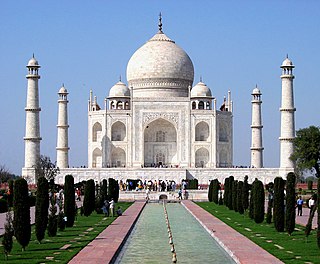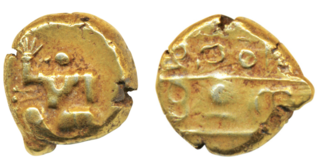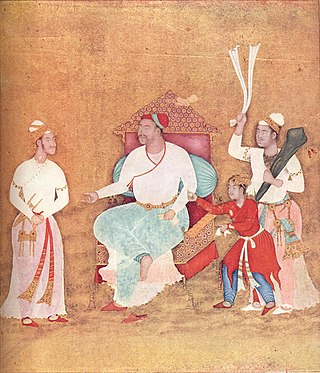Accolades
In 2012, Subrahmanyam was awarded the first Infosys Prize in Humanities, for his 'path-breaking contribution to history'. [8] He also served as a Humanities jury member for the prize from 2019. [9]
He was elected to the American Academy of Arts and Sciences in 2009 and as a corresponding fellow to the British Academy in 2016. Bryn Mawr College in Pennsylvania selected Dr. Subrahmanyam as the 2009 Mary Flexner Lecturer. He was elected professor and to the chair Histoire Globale de la Première Modernité at the Collège de France in 2013.
On 67 February 2017, Subrahmanyam received an honoris causa doctorate from the Université catholique de Louvain. [10]
The Martine Aublet Prize for 2018 was awarded to Subrahmanyam for his book, L'inde sous les yeux de l'Europe: mots, peuples, empires (Alma Editeur, 2018), by the Musée de Quai Branly. [11]
In February 2019, Sanjay Subrahmanyam was awarded the Dan David Prize for History (jointly with Kenneth Pomeranz, Chicago). [12]
In 2022, Sanjay Subrahmanyam was awarded the Comité International des Sciences Historiques (CISH) Prize in History at the XXIII Congress of the Historical Sciences in Poznan, Poland. [13]
Historian Srinath Raghavan wrote of Subrahmanyam in 2013, [14]
His scholarship spans the entire early modern period, from the 15th to 18th centuries CE, and more besides. Similarly, his geographical expertise stretches from South, South-East and West Asia to Western Europe and Latin America. Then there are his technical skills, ranging from statistical analysis of economic data to interpretation of literary and visual materials. Although Subrahmanyam began as an economic historian, he has branched out to work on political, intellectual and cultural history. He works in over ten European and Asian languages and draws on sources from a dazzling array of archives. Finally, there is his sheer productivity. Subrahmanyam seems to write top-class history faster than most of us can read.

According to consensus in modern genetics, anatomically modern humans first arrived on the Indian subcontinent from Africa between 73,000 and 55,000 years ago. However, the earliest known human remains in South Asia date to 30,000 years ago. Sedentariness, which involves the transition from foraging to farming and pastoralism, began in South Asia around 7000 BCE. At the site of Mehrgarh, its presence can be documented, with evidence of domestication of wheat and barley, rapidly followed by that of goats, sheep, and cattle. By 4500 BCE, such settled life had increasingly spread, and began to gradually evolve into the Indus Valley civilisation, which was contemporaneous with Ancient Egypt and Mesopotamia. This civilisation flourished between 2500 BCE and 1900 BCE in present-day Pakistan and north-western India, and was noted for its urban planning, baked brick houses, elaborate drainage, and water supply.

Vijayanagara is a city in the Vijayanagara district in the Indian state of Karnataka. Vijayanagara was the capital city of the historic Vijayanagara Empire. Located on the banks of the Tungabhadra River, it spread over a large area and included the modern era Group of Monuments at Hampi site in the Vijayanagara district, the Ballari district, and others in and around these districts in Karnataka, India. A part of Vijayanagara ruins known as Hampi has been designated as a UNESCO World Heritage Site.

Indo-Persian culture refers to a cultural synthesis present in India and Pakistan. It is characterised by the absorption or integration of Persian aspects into the various cultures of South Asia. The earliest introduction of Persian influence and culture to the subcontinent was by various Muslim Turko-Persian rulers, such as the 11th-century Sultan Mahmud Ghaznavi, rapidly pushed for the heavy Persianization of conquered territories in northwestern India, where Islamic influence was also firmly established. This socio-cultural synthesis arose steadily through the Delhi Sultanate from the 13th to 16th centuries, and the Mughal Empire from then onwards until the 19th century. Various Muslim dynasties of Turkic, local Indian and Afghan origin patronized the Persian language and contributed to the development of a Persian culture in India. The Delhi Sultanate developed their own cultural and political identity which built upon Persian and Indic languages, literature and arts, which formed the basis of an Indo-Muslim civilization.

India was one of the largest economies in the world, for about two and a half millennia starting around the end of 1st millennium BC and ending around the beginning of British rule in India.

Medieval India refers to a long period of Post-classical history of the Indian subcontinent between the "ancient period" and "modern period". It is usually regarded as running approximately from the breakup of the Gupta Empire in the 6th century CE to the start of the Early modern period in 1526 with the start of the Mughal Empire, although some historians regard it as both starting and finishing later than these points. The medieval period is itself subdivided into the Early Medieval and Late Medieval eras.

BukkaRaya I was an emperor of the Vijayanagara Empire from the Sangama Dynasty. He was a son of Bhavana Sangama, the chieftain of a cowherd pastoralist community, who claimed Yadava descent.

Tapan Raychaudhuri was a British-Indian historian specialising in British Indian history, Indian economic history and the History of Bengal.

Colonel Antoine-Louis Henri de Polier (1741–1795) was a Swiss adventurer, art collector, military engineer and soldier who made his fortune in India in the eighteenth century. He was the father of Count Adolphe de Polier.
Muzaffar Alam is the George V. Bobrinskoy Professor in South Asian Languages and Civilizations at the University of Chicago.
The role and scale of British imperial policy during the British Raj on India's relative decline in global GDP remains a topic of debate among economists, historians, and politicians. Some commentators argue the effect of British rule was negative, and that Britain engaged in a policy of deindustrialisation in India for the benefit of British exporters which left Indians relatively poorer than before British rule. Others argue that Britain's impact on India was either broadly neutral or positive, and that India's declining share of global GDP was due to other factors, such as new mass production technologies or internal ethnic conflict.
Rajat Kanta Ray is a historian of South Asian history, specializing in Modern Indian history.

The political history of the region on the Deccan Plateau in west-central peninsular India that was later divided into Mysore state and Coorg province saw many changes after the fall of the Hindu Vijayanagara Empire in 1565. The rise of Sultan Haidar Ali in 1761 introduced a new period.

The political history of Mysore and Coorg (1761–1799) is the political history of the contiguous historical regions of Mysore State and Coorg province on the Deccan Plateau in west-central peninsular India from the time of the rise of Haidar Ali in 1761 to that of the death of his son Tipu Sultan in 1799.

The political history of Mysore and Coorg (1800–1947) is the political history of the contiguous historical regions of Mysore state and Coorg province located on the Deccan Plateau in west-central peninsular India, beginning with the acceptance of British suzerainty in 1800 to the independence of India in 1947.

The Mughal Empire was an early modern empire based in South Asia between the 16th and 19th centuries. For some two hundred years, the empire stretched from the outer fringes of the Indus River Basin in the west, northern Afghanistan in the northwest, and Kashmir in the north, to the highlands of present-day Assam and Bangladesh in the east, and the uplands of the Deccan Plateau in South India.

The Army of the Mughal Empire was the force by which the Mughal emperors established their empire in the 15th century and expanded it to its greatest extent at the beginning of the 18th century. Although its origins, like the Mughals themselves, were in the cavalry-based armies of central Asia, its essential form and structure was established by the empire's third emperor, Akbar.
John F. Richards was a historian of South Asia and in particular of the Mughal Empire. He was Professor of History at Duke University, North Carolina, and a recipient in 2007 of the Distinguished Contributions to Asian Studies Award. He participated in and encouraged a multi-disciplinary, multi-regional approach to studies.

The Deccanis or Deccani People are an ethnoreligious community of Urdu-speaking Muslims who inhabit, or trace their ancestry from, the Deccan region of Southern and Central India, and speak the Deccani dialect. The community traces its origins to the shifting of the Delhi Sultanate's capital from Delhi to Daulatabad in 1327 during the reign of Muhammad bin Tughluq. The migration of Hindavi-speaking people to the Deccan, and the conversion of local Hindus to Islam, led to the creation of a new community of Urdu-speaking Muslims, known as the Deccani, who would come to play an important role in the politics of the Deccan. Their language, Deccani Urdu, emerged as a language of linguistic prestige and culture during the Bahmani Sultanate, further evolving in the Deccan Sultanates.
Dirk Herbert Arnold Kolff is a Dutch historian and Indologist. Born at Rotterdam in the Netherlands, Kolff earned a doctorate degree from the Leiden University in 1983 with a doctoral thesis on the research subject of armed peasantry in northern India. He is a professor emeritus of modern South Asian history and the former Chair of Indian History at the Leiden University.
The economy of the Mughal Empire was large and prosperous. India producing about 28% of the world's industrial output up until the 18th century. Mughal India's economy has been described as a form of proto-industrialization, like that of 18th-century Western Europe prior to the Industrial Revolution.














